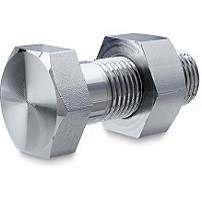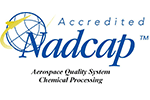Passivation

Although stainless steel is known to be a corrosion resistant alloy, it can become reactive after subjected to certain manufacturing applications such as machining or shot peening. These operations can remove the passive oxide layer thereby exposing iron or transferring iron onto the surface. Passivation is a process used to remove ‘free’ iron from the surface of the stainless steel and render it inactive. The process is performed by first chemically cleaning the stainless steel to remove any soils, oil, and machining lubricants to produce a clean surface. Then the stainless steel is immersed into an acid solution, sometimes fortified with an oxidizer, to dissolve away the free iron and its compounds. This results in the formation of an ‘unreactive’, protective chromium oxide barrier which prevents oxygen and moisture from reaching the iron underneath.
| Specification | Specification Description | Company |
|---|---|---|
| BPS 4007 Procedure 1 | Passivation | Bell |
| AMS 2700 Ty II and IV | PWC-APU Program | Pratt & Whitney Canada (PWC) |
| ASTM A967 | PWC-APU Program | Pratt & Whitney Canada (PWC) |
| AMS 2700 Ty 1,2,4,6 Method 1 | Passivation | Various |
| QQ-P-35 | Passivation | Various |








